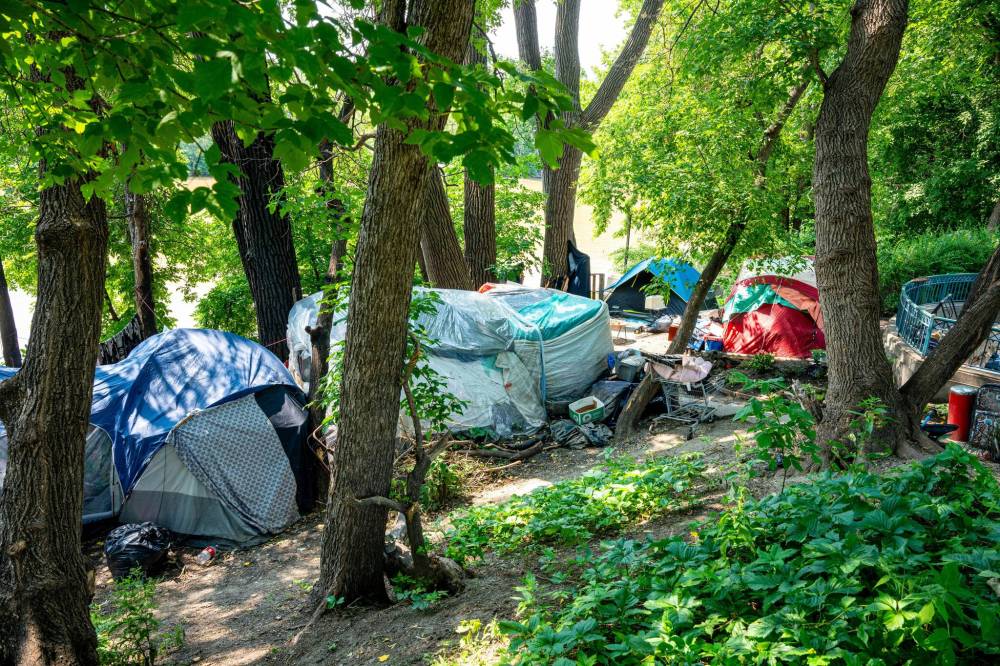A look at housing solutions
Advertisement
Read this article for free:
or
Already have an account? Log in here »
To continue reading, please subscribe:
Monthly Digital Subscription
$0 for the first 4 weeks*
- Enjoy unlimited reading on winnipegfreepress.com
- Read the E-Edition, our digital replica newspaper
- Access News Break, our award-winning app
- Play interactive puzzles
*No charge for 4 weeks then price increases to the regular rate of $19.00 plus GST every four weeks. Offer available to new and qualified returning subscribers only. Cancel any time.
Monthly Digital Subscription
$4.75/week*
- Enjoy unlimited reading on winnipegfreepress.com
- Read the E-Edition, our digital replica newspaper
- Access News Break, our award-winning app
- Play interactive puzzles
*Billed as $19 plus GST every four weeks. Cancel any time.
To continue reading, please subscribe:
Add Free Press access to your Brandon Sun subscription for only an additional
$1 for the first 4 weeks*
*Your next subscription payment will increase by $1.00 and you will be charged $16.99 plus GST for four weeks. After four weeks, your payment will increase to $23.99 plus GST every four weeks.
Read unlimited articles for free today:
or
Already have an account? Log in here »
Hey there, time traveller!
This article was published 01/11/2024 (386 days ago), so information in it may no longer be current.
The Manitoba government recently announced a $10-million investment into a private-public partnership for construction of “affordable housing.”
According to the news release it is for home ownership, not much-needed low-rent housing. Developed by the Business Council of Manitoba, the Collaborative Housing Alliance Real Estate Investment Trust aims to increase the availability of affordable housing in Manitoba by converting and renovating existing buildings and constructing new units that will offer below-market affordable options. We do need a financing vehicle to get private investment into social housing and a policy framework that is based on more than charity.
First a few definitions to clarify the difference between public housing that’s owned by the government and operated by Manitoba Housing, and non-profit housing that is funded partially through government funds but owned by non-profit housing providers.

There was a shift away from publicly owned and operated housing to non-profit from the ’60s to the ’90s when the federal government devolved the responsibility for social housing to the provinces. This move was part of Mulroney-era privatization based on the notion that housing is not a government responsibility, and that the portfolio of thousands of units of public housing with a liability government. The Chrétien Liberal government proceeded with devolution agreements in all provinces.
Third is privately owned properties that operate on a for-profit basis. Some of these private properties are owned locally, some are part of a larger corporation. From a community economic development point of view this is important, because we want investment into private market housing to stay in our local economy. The mix of these types of housing ownership is important to ensure investment in housing people at risk of homelessness and living in poverty results in efficient use of public funds.
Having a vehicle that allows private contributions to housing solutions that end homelessness and address poverty, and cost-of-living increases is necessary and requires a policy scheme that would link financing and construction. Creating a system that allows construction of single-family homes to contribute to more affordable housing is also a good strategy. In other jurisdictions, this is done through development fees, as well as inclusionary zoning.
Inclusionary zoning requires that any housing development, whether a subdivision or condo or infill, would have a certain percentage, from 10 per cent to 20 per cent be low-rent housing. This geography-based inclusionary percentage would also include units with universal design for people living with a disability. The Social Planning Council proposed this as far back as 2013.
The requirement for inclusionary zoning can be combined with development fees, requiring home builders to pay a fee to cover the cost of affordable housing and low-rent housing. Private developers would be given the option to either construct the inclusionary zoning percentage of affordable housing in mixed-income and mixed-used developments, or they could pay the fee into the community housing fund so housing non-profits and co-ops could access the funds to build the affordable housing.
Another idea worth considering besides this community housing fund proposal and inclusionary zoning to help support and facilitate effective and efficient housing development is a clear outline of the roles and responsibilities for partners; municipal, provincial, federal governments as well as community non-profits and the private sector.
It would be helpful for clarity of the roles for each level of government, as well as the business and community sector in the development of social housing. Roles such as land purchase and assembly, including asset mapping of land, buildings for potential conversion, vacant and tax sale homes, are usually municipal ones. The infrastructure construction, such as water and sewer, is also usually a municipal role, the construction financing requires other levels of government, paying taxes, rent subsidies, reserve fund investment, are all costs for higher levels of government and developers. The rising costs of building materials, professional costs, trade labour costs, operational costs including social services also must be considered. A collaborative and organized plan is needed to meet the scale of housing development needed.
A community fund to construct housing has been missing in Winnipeg and proposed for a long time. If a fund had been created in the ’90s with public and private investment, the current homelessness and housing crisis we are facing could have been adverted.
Marianne Cerilli was the NDP housing critic in the 1990s and legislative assistant to the minister of housing. As a community mentor she initiated the HOMES program and Winnipeg Rental Network while working at West Central Women’s Resource Centre.



